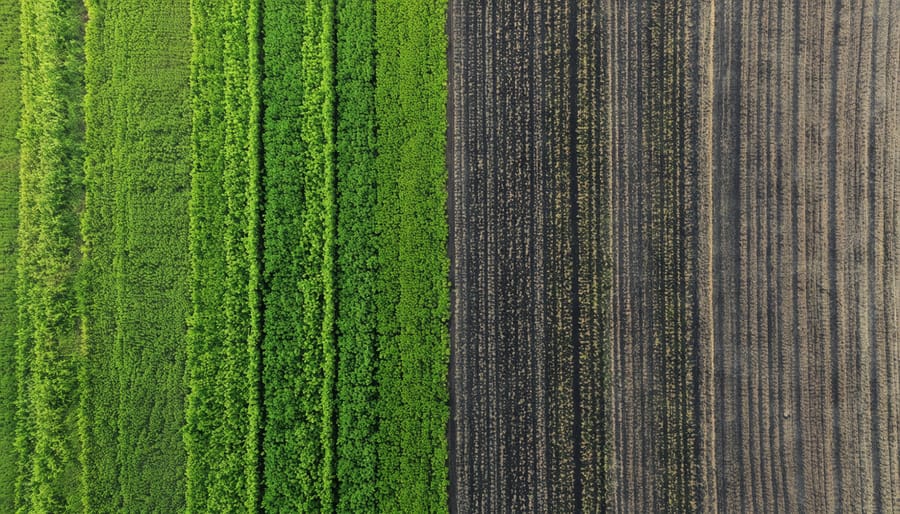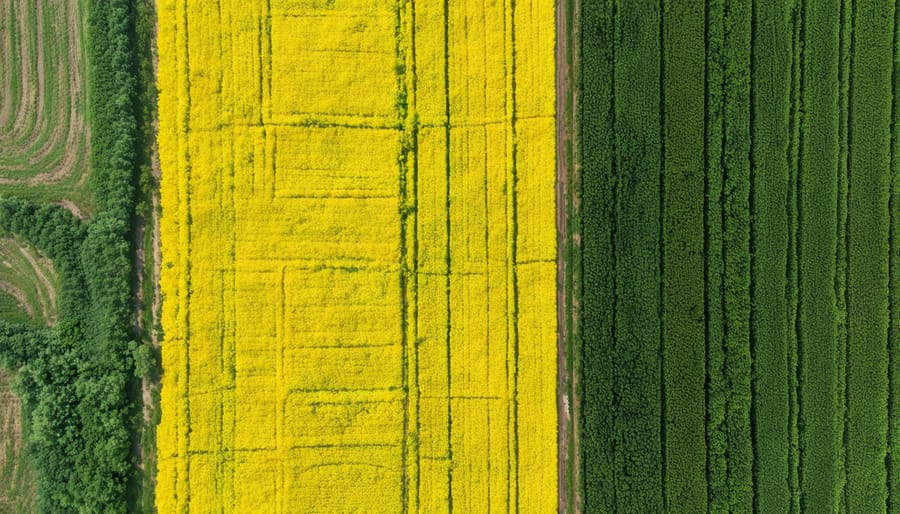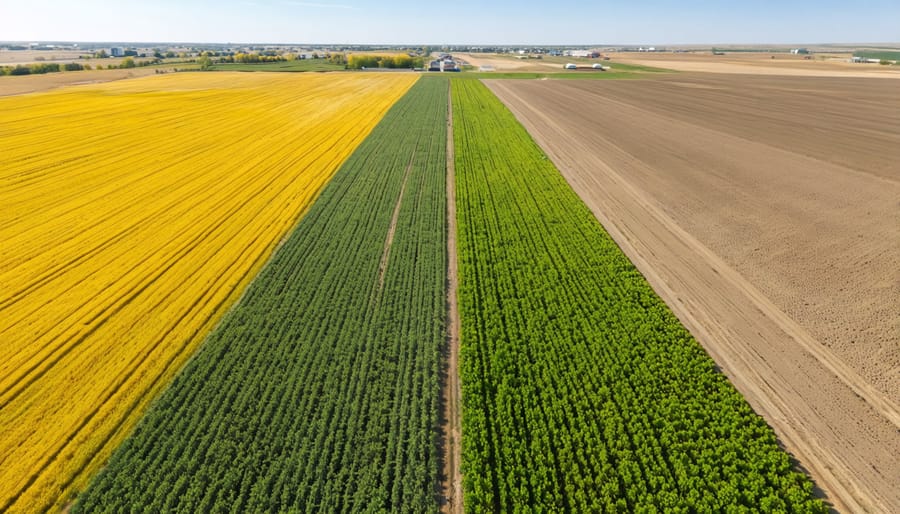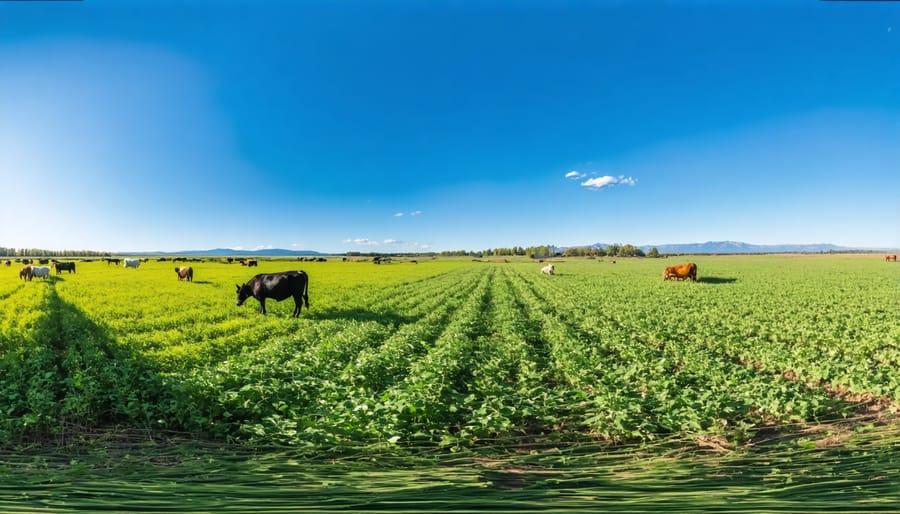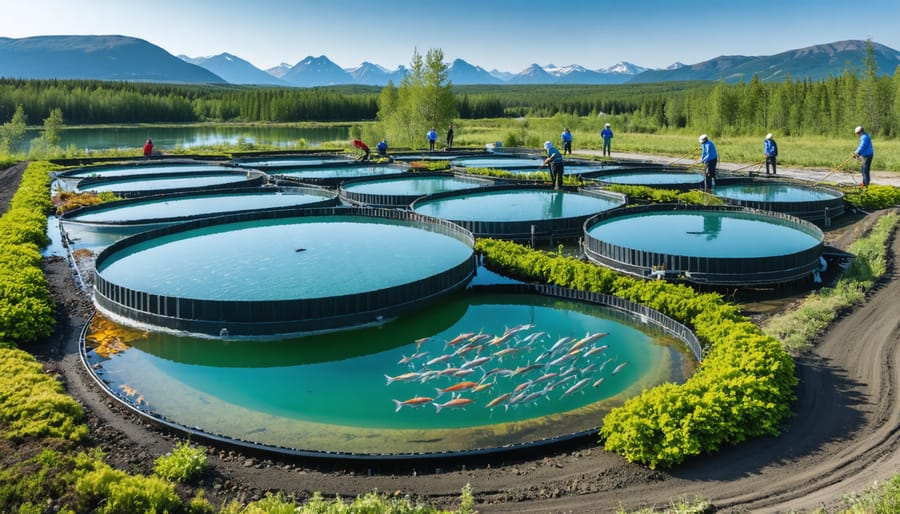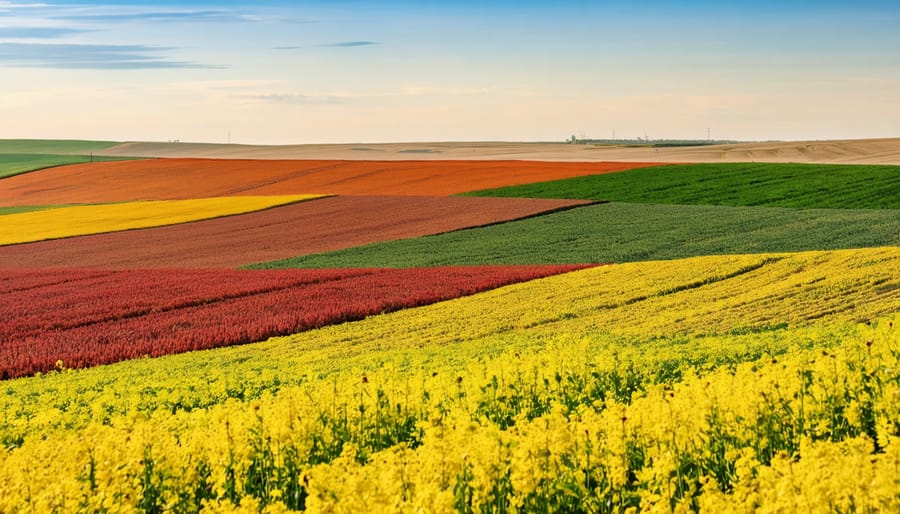Picture a thriving Alberta canola field, where countless species of beneficial insects, microorganisms, and native plants work together in perfect harmony. This isn’t just nature’s artwork – it’s a powerful economic engine driving sustainable agriculture across the Canadian prairies. Biodiversity acts as both the foundation and the outcome of essential ecosystem services, creating a self-reinforcing cycle that directly impacts farm productivity and resilience.
As Canadian farmers face increasing climate uncertainties and market pressures, understanding biodiversity as an ecosystem service has never been more critical. From natural pest control provided by predatory insects to enhanced soil fertility from diverse microbial communities, biodiversity delivers tangible benefits worth millions of dollars annually to our agricultural sector. Research from the University of Alberta shows that farms with higher biodiversity levels demonstrate up to 30% better drought resistance and require significantly fewer external inputs.
Yet, biodiversity transcends simple service provision – it’s the fundamental infrastructure that enables all other ecosystem services to function. Like the interwoven threads of a sturdy work jacket, each species plays a vital role in maintaining the fabric of our agricultural ecosystems, making biodiversity both a service provider and the essential platform upon which all other ecological services depend.
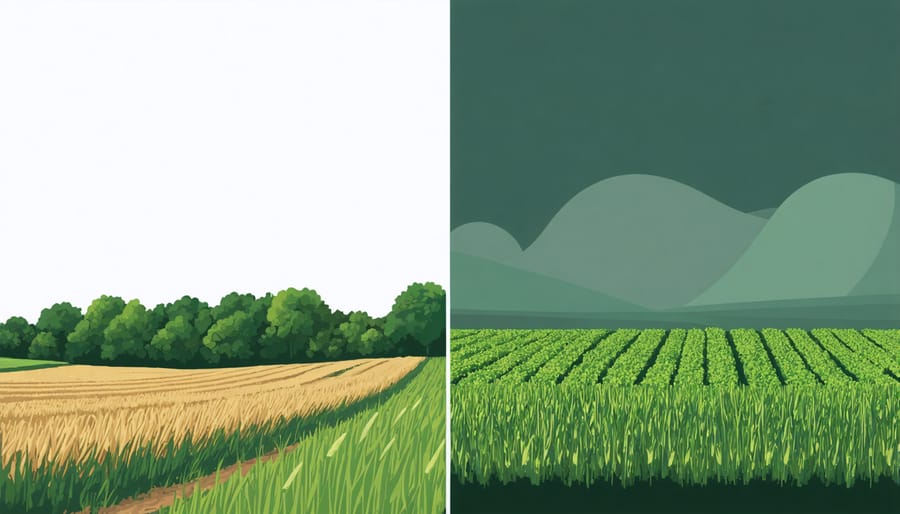
Beyond Simple Species Count: Biodiversity as a Farm Asset
The Alberta Advantage: Local Biodiversity Success Stories
Alberta farmers are leading the way in demonstrating how biodiversity can enhance agricultural productivity while supporting ecosystem services. The Stahl family farm near Red Deer showcases how agroecological farming practices and biodiversity work together to create resilient farming systems. By maintaining natural wetlands and incorporating diverse crop rotations, they’ve reduced pest problems by 40% while improving soil health.
In the Peace Country region, the Johnson family farm has transformed 200 hectares into a biodiversity haven by establishing wildlife corridors and implementing rotational grazing. Their approach has led to a 30% increase in pollinator activity and improved drought resistance across their operation.
Near Lethbridge, the Prairie Heritage Seeds Collective demonstrates how preserving native grassland species alongside crop production creates mutual benefits. Their seed saving program has helped preserve over 50 native plant species while providing natural wind barriers and erosion control.
These success stories highlight how Alberta farmers are turning biodiversity from a concept into a practical farming asset, proving that ecological stewardship and profitable agriculture can work hand in hand.
Measuring Biodiversity’s Economic Impact
Measuring biodiversity’s economic impact on your farm doesn’t have to be complicated. Start by tracking key indicators like crop yield variations between areas with different levels of natural habitat. Many Alberta farmers report 15-20% higher yields in fields bordered by natural windbreaks and diverse vegetation.
Consider documenting pollinator activity – a simple count of different bee species visiting your crops can indicate ecosystem health. Local studies show that farms with diverse pollinator populations save an average of $2,000 per quarter section on pollination services annually.
Keep records of pest management costs. Farmers using biodiversity-friendly practices often see a 30-40% reduction in pesticide use over three years. Natural pest control from birds and beneficial insects can save $5,000-7,000 annually on a mid-sized operation.
Track soil health indicators like organic matter content and earthworm populations. These measurements directly correlate with reduced fertilizer needs and improved water retention. Several Alberta farmers report saving up to $45 per acre on irrigation costs through improved soil biology.
Remember to factor in government incentives for biodiversity conservation, which can provide additional revenue streams while protecting valuable ecosystem services.
Direct Benefits to Your Food Production
Natural Pest Control
In Alberta’s diverse agricultural landscapes, nature provides one of the most effective pest control solutions through balanced ecosystems. When fields maintain healthy biodiversity, they create natural defense mechanisms against harmful pests. These crop diversity benefits include supporting beneficial insects like ladybugs, ground beetles, and parasitic wasps that naturally control pest populations.
Consider the example of canola fields in central Alberta, where farmers who maintain diverse field margins report up to 60% fewer flea beetle outbreaks compared to monoculture operations. This natural pest control occurs because predatory insects find shelter in nearby native vegetation and move into crops to feed on pests.
Birds also play a crucial role in this ecosystem service. A single barn swallow family can consume up to 6,000 insects daily, including crop-damaging moths and beetles. Similarly, bat populations supported by diverse landscapes can consume thousands of night-flying pest insects.
The soil ecosystem itself contributes to pest control when properly diverse. Beneficial nematodes and fungi naturally present in healthy soils help control root-feeding pests and soil-borne diseases. Local farmers who maintain crop rotations and support soil biodiversity often report reduced need for chemical pesticides, leading to significant cost savings while maintaining productive yields.
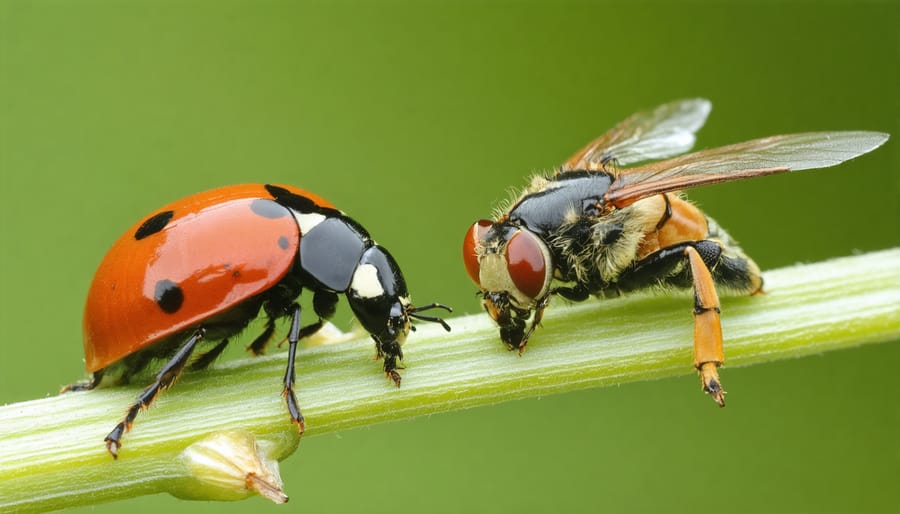
Pollination Services
On Alberta farms, pollination services stand as one of nature’s most valuable ecosystem services, directly impacting crop yields and farm profitability. Our local crops, from canola to alfalfa, rely heavily on both managed honeybees and wild pollinators, including native bees, butterflies, and other beneficial insects.
Research from the University of Alberta shows that farms with greater pollinator diversity consistently produce higher yields, with some crops showing up to 30% improvement when multiple pollinator species are present. For instance, canola fields with both honeybees and native bees typically yield 3-5 more bushels per acre compared to those with limited pollinator diversity.
Local farmer James Thompson from Lacombe County shares, “Since implementing pollinator-friendly practices like maintaining natural hedgerows and reducing pesticide use, we’ve seen more wild bees in our fields. Our canola yields have never been better.”
The economic value of pollination services in Alberta alone exceeds $1 billion annually. Beyond managed honeybees, wild pollinators provide free pollination services that work even in conditions where honeybees might not – like cooler temperatures or windy days. They’re also active earlier in the spring and later in the fall, extending the pollination window for many crops.
To support pollinator diversity, consider establishing flowering field margins, maintaining uncultivated areas with native plants, and implementing integrated pest management strategies that protect beneficial insects.
Soil Health and Biodiversity Connection
Underground Allies
Beneath our feet lies a complex network of microorganisms that form the backbone of soil health and ecosystem productivity. These underground allies – including bacteria, fungi, and other microscopic organisms – work tirelessly to maintain soil structure, cycle nutrients, and support plant growth across Alberta’s diverse agricultural landscape.
A single teaspoon of healthy soil contains billions of beneficial microorganisms, each playing a unique role in maintaining soil fertility. Mycorrhizal fungi, for instance, form partnerships with crop roots, helping plants access water and nutrients more effectively. Meanwhile, nitrogen-fixing bacteria convert atmospheric nitrogen into forms that crops can use, naturally enriching the soil.
Local studies in Alberta’s farming communities have shown that fields with greater soil biodiversity typically produce higher yields and show better resilience during drought conditions. These microscopic organisms also help break down crop residues, creating natural fertilizer and improving soil structure.
By maintaining healthy soil biodiversity through practices like reduced tillage and diverse crop rotations, farmers can harness these natural allies to enhance their land’s productivity while reducing input costs.
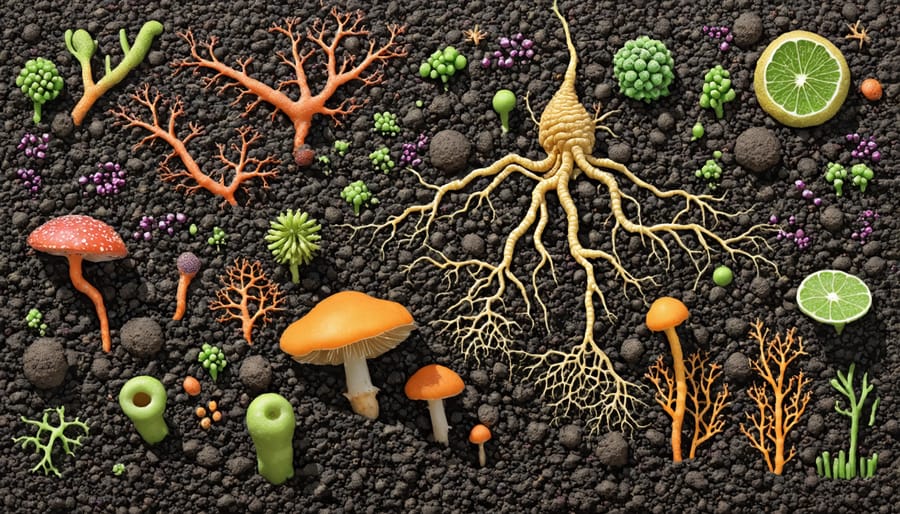
Building Resilient Soil Systems
Biodiversity plays a crucial role in developing healthy soil ecosystems, which are fundamental to successful farming operations across Alberta. When diverse plant species, microorganisms, and soil fauna work together, they create a resilient underground network that enhances soil structure and fertility naturally.
Here in our Prairie provinces, we’ve observed that fields with greater plant diversity tend to have better soil aggregation and organic matter content. This is because different root systems create varied channels in the soil, while beneficial organisms like earthworms and beneficial fungi improve soil structure through their activities.
The presence of diverse soil organisms helps break down organic matter more efficiently, releasing nutrients in forms that crops can readily use. For example, many Alberta farmers have noticed improved nitrogen fixation in fields where they maintain diverse crop rotations and support native soil bacteria.
This natural system reduces the need for synthetic inputs while building long-term soil health. Maintaining soil biodiversity is like having thousands of tiny workers helping to maintain your field’s productivity year after year.
Practical Steps for Canadian Farmers
Season-Specific Actions
In Alberta’s diverse agricultural landscape, implementing sustainable agricultural practices requires a seasonal approach to biodiversity management. Here’s a practical timeline for maximizing biodiversity benefits throughout the year:
Spring (March-May):
• Establish native flowering plants along field margins
• Install or maintain bee houses and bird nesting boxes
• Plan crop rotations to support soil biodiversity
• Monitor early-season beneficial insects
Summer (June-August):
• Maintain flowering strips for pollinators
• Practice targeted mowing to preserve wildlife habitats
• Monitor and document species presence
• Leave unmowed strips for ground-nesting birds
Fall (September-November):
• Leave crop residue for soil organisms
• Plant cover crops to support winter biodiversity
• Create winter shelter for beneficial insects
• Collect and save native seeds for next season
Winter (December-February):
• Maintain windbreaks and shelterbelts
• Plan next season’s biodiversity corridors
• Attend local workshops on biodiversity management
• Review and update biodiversity monitoring records
Remember that timing may vary based on your specific location within Alberta and annual weather patterns. Working with local agricultural extension services can help fine-tune these activities for your particular operation.
Cost-Effective Implementation
Enhancing biodiversity on your farm doesn’t have to break the bank. Many Alberta farmers have found success with simple, cost-effective strategies that deliver significant benefits. Start by maintaining existing natural areas like wetlands, woodlots, and fence lines, which serve as vital wildlife corridors and habitat without additional investment.
Consider implementing buffer strips along field edges using native plant species. These can be established gradually over several seasons to spread out costs while providing immediate benefits to beneficial insects and pollinators. Local conservation groups often offer free or subsidized native seed programs to help get you started.
Crop rotation is another budget-friendly approach that naturally promotes biodiversity. By varying your crops, you’re creating diverse habitats while potentially reducing input costs. Many Alberta farmers report success with three to four-year rotation cycles that include cover crops.
Take advantage of cost-sharing programs through organizations like ALUS Canada and the Environmental Farm Plan. These programs can help offset the initial costs of biodiversity initiatives. For instance, the Morrison family farm near Red Deer received support to establish pollinator strips, which now help maintain their crop yields while supporting local wildlife.
Remember that even small changes count. Starting with a single field border or incorporating one new cover crop variety can make a difference without requiring significant upfront investment. The key is to begin with manageable projects and expand as resources allow.
Throughout this exploration of biodiversity as an ecosystem service, we’ve seen how vital it is to sustainable agriculture here in Alberta and across Canada. The evidence is clear: biodiversity isn’t just a nice-to-have feature of our farmlands – it’s a fundamental service that supports our agricultural success and environmental stewardship.
From our rich soil microorganisms to beneficial insects and native plant species, each component of biodiversity plays a crucial role in maintaining healthy, productive farms. These natural relationships provide essential services like pollination, pest control, and soil fertility that would be costly or impossible to replicate artificially.
As Alberta farmers, we’re uniquely positioned to benefit from and contribute to biodiversity conservation. By implementing practices like crop rotation, maintaining natural habitats, and reducing chemical inputs, we’re not just protecting biodiversity – we’re investing in our farms’ long-term productivity and resilience.
Looking ahead, the value of biodiversity as an ecosystem service will only increase as we face climate challenges and evolving agricultural demands. The good news is that every action we take to support biodiversity on our farms, no matter how small, contributes to a more sustainable agricultural future.
Remember, when we protect biodiversity, we’re not just supporting our own operations – we’re preserving a precious resource for future generations of Canadian farmers. By working together and sharing our experiences, we can build a stronger, more resilient agricultural community that benefits from and contributes to the incredible ecosystem services that biodiversity provides.

